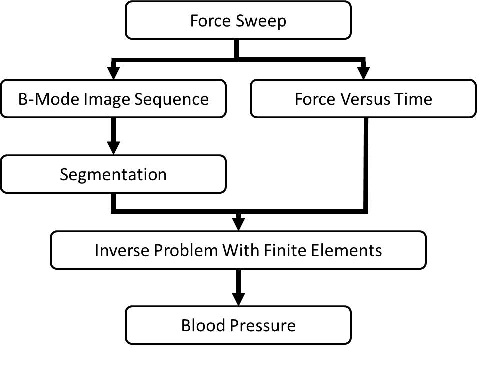- ALL COMPUTER, ELECTRONICS AND MECHANICAL COURSES AVAILABLE…. PROJECT GUIDANCE SINCE 2004. FOR FURTHER DETAILS CALL 9443117328


Projects > ELECTRONICS > 2017 > IEEE > DIGITAL SIGNAL PROCESSING
Many commercially-available arterial blood pressure measurement devices suffer from a range of weaknesses. For example, common weaknesses include being inaccurate, invasive, and ad hoc; many also require explicit user calibration or cut off blood flow to a limb. A novel algorithmic approach is presented to accurately estimate systolic and diastolic blood pressure in a way that does not require any explicit user calibration, is non-invasive, and does not cut off blood flow. Methods: The approach uses ultrasound images of the arterial wall and corresponding contact force data to obtain blood pressure estimates. To acquire data, an ultrasound probe was placed on the patient’s carotid artery and the contact force was increased from 1.5 to 12 Newtons. The artery was then algorithmically segmented from the recorded DICOM B-Mode data. The segmentation data and the contact force were used as input into the Levenberg-Marquardt optimization method to solve for the parameters, including blood pressure, of a simple finite element model of the carotid artery.
Multi-Scale Compression, Modified Elastography Approach, Hough Transform.
A novel method to measure blood pressure was developed and implemented. From the study, the accuracy and precision of the method to measure systolic pressure are compared. For practical implementation in a clinical environment, further research will be needed to address a number of issues, including developing a device that allows for operator independence, continuous measurements, and ease of use. While such a device is the subject of current research and future papers, validation of the novel blood pressure measurement technique is an important step on the road to this future device. While the method of blood pressure estimation does require the availability of an ultrasound probe and appropriate force measurement attachment, it has the potential for unprecedented flexibility. The general approach has potential to be used not only for arterial blood pressure but also pressure in veins and even to measure cyst pressure and embryonic fluid pressure. It also has potential to be used for patients with hypertension and atherosclerosis. It uses ultrasound, it is non-invasive, and it does not occlude the vessel. Further, assuming accurate force measurement, no manual calibration is needed with the method as calibration is completed on a fundamental level for this algorithm.
ALGORITHM WORK FLOW
